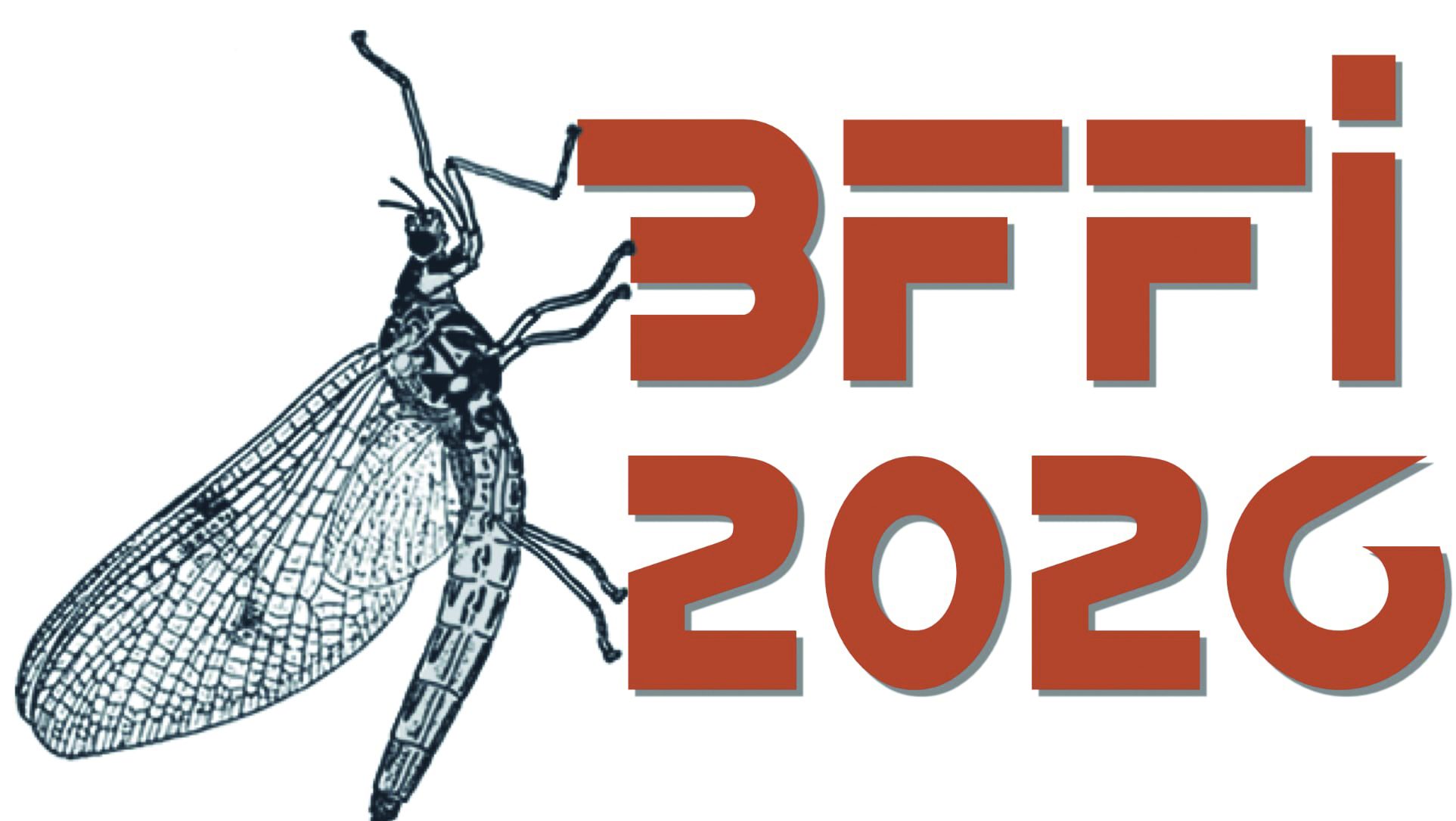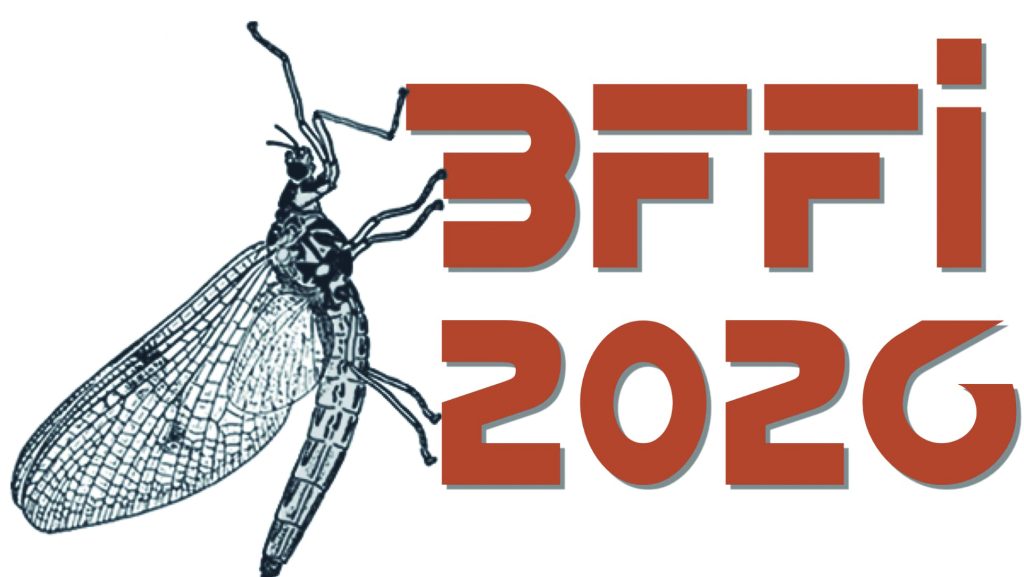STILLWATER AND RESERVOIR FLY FISHING GUIDE: BEWL WATER
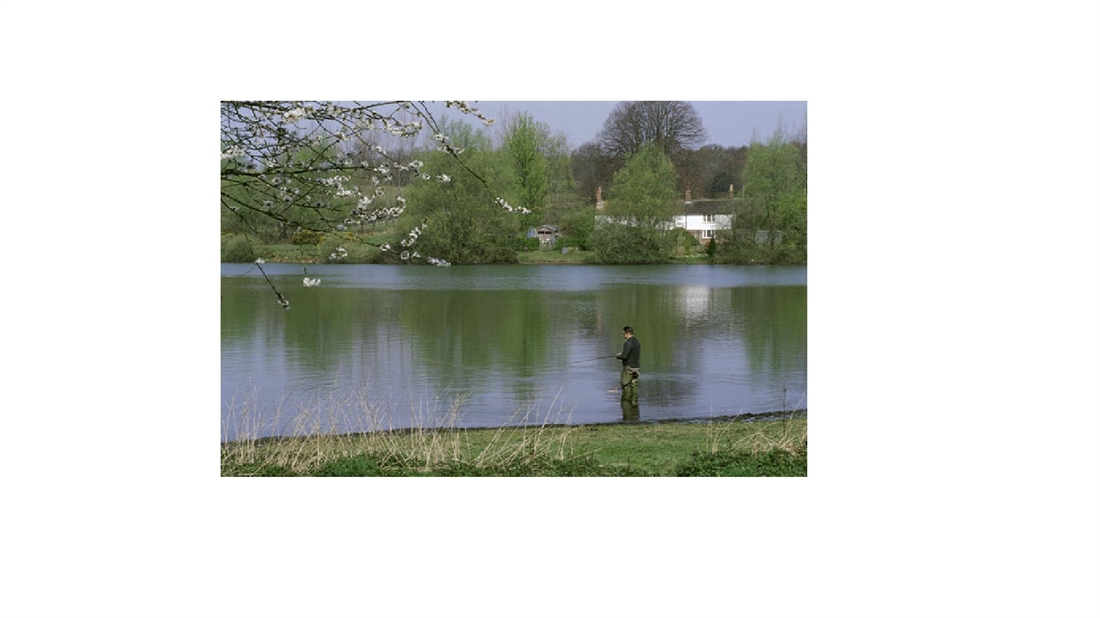
A gentle corduroy ripple patterns the surface. A few yards out, a trout moves upwind towards you, sipping down tiny midges. You have the bank to yourself. This is Bewl Water which has earned a justifiable reputation as an exceptional ‘top-of-the-water’ fishery.
Paul Canning, who has fished the lake from the first day it opened in 1978, tells you how to enjoy the best bank fishing this lovely reservoir has to offer.
SET in very picturesque landscape on the borders of Kent and Sussex, Bewl Water was made for bank fishing. The overall shape and a very varied bank profile means that there is always somewhere for the bank angler to fish on any wind.
A brief glance at a map shows you why the lake offers so much choice for the bank angler. Three well profiled, indented arms linked to a main body of water provide ample opportunity for trout to move around and for the bank angler to intercept them at numerous points and bays. Winds are distorted by the landscape to add variety to fish movements and a succession of food items throughout the season will keep the imitative bank angler thinking and looking.
Bewl is definitely a floating line water. There may be occasions when an interme¬diate, sink tip or faster sinking line might catch, but for the vast majority of bank anglers who have come to know this reser¬voir well, the floater rules. There are numerous spots that are either fished lightly or not at all. With little fishing pres¬sure on many banks, trout can be in very close and feeding with confidence. Certainly this has been the focus of my bank fishing for many years at Bewl. There is nothing better than finding a trout feeding yards from the edge and picking off an indi¬vidual fish with a well placed dry or floating fry.
Trout can be found surface feeding on midges right from the start of the season. This trend continues for much of the year as frequent calm conditions and a succession of small food items hold fish at the surface.
Incredible hatches of small 2-3mm green midges in the Summer really get the fish going on top. Trout at Bewl seem to adore feeding on them and it is quite common to find hundreds in spoonings. Good popula¬tions of fry develop every year to give consistent sport with fry feeders in the Autumn months.
They start as near invisible juvenile coarse fish or ‘Jellyfry’. These glass-like slivers gather in numbers, often near to banks to drive trout wild. Bank anglers often have the best chance of intercepting fish gorging on them. The young fry soon colour up and, as they grow, will continue to be harassed by trout right to the end of the season. Sticking to a select and sensible shortlist of patterns will ease concerns about what to use. Buzzers, sedges, cranefly, hawthorn flies, beetles, fry, damsel nymphs, corixa, snails, caenis, shrimp and hoglouse can all figure in trout diets at Bewl. If you go equipped with good imitative patterns and walk the banks you will do well on most days.
UNDERSTANDING THE WIND
Wind direction is a critical factor in fishing Bewl from the bank. Winds are frequently distorted by the landscape, meaning that there is always somewhere for the bank angler to fish. Here, Paul Canning reveals the locations that produce – whatever the wind is doing.
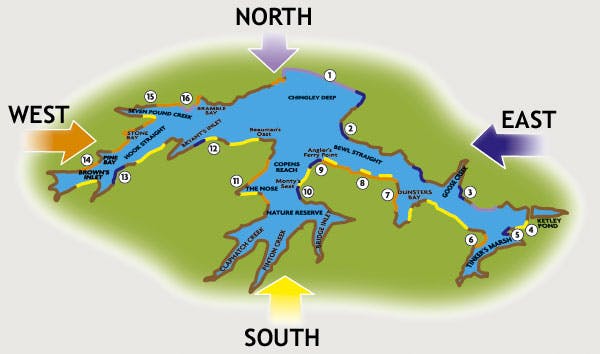
WIND
DIRECTION
BEST AREAS
Trickiest
The Dam, Bramble Point, Seven Pound Creek
Prevailing
S
Bewl Straight, The Nose, Wards Lane, Monty’s Seat, Ferry Point
Warmest
W
Hook Straight, The Nose, Tinker’s Point, Bewl Straight
Coldest
E
Chingley Corner, Goose Creek, Monty’s Seat to Ferry Point
Wind Direction
AS a general rule, try to fish whatever arm the wind is blowing down, along or slightly out from. Trout at Bewl love to move upwind and locals very much favour the upwind banks.
The lake does not seem to fish well in strong winds. Dirty water pushes trout out. Strong winds will also slow surface feeding and can put trout down altogether, especially after extended periods of calm water feeding.
Try to get off the wind unless you can find a clean point to fish. The prevailing wind direction at Bewl in the Summer months is Southerly.
The lake usually fishes well on this wind and it is an ideal direction for many banks including Hook Straight, The Nose, Ferrypoint, Monty’s Seat, Bewl Straight, Dunsters, Rosemary Lane and the Tinker’s Marsh area. The Dam can also be good if the wind is not too strong.
East winds can also be good if it is not too cold. Ferry Point to Monty’s Seat, Hook Straight, Goose Creek, Wards Lane and Chingley Corner are all worth trying.
For West winds, try the West side of Hook Straight including Bramble Bay, Seven Pound Creek, Seven Pound Point and up to the Top of Hook. The Nose and Bewl Straight from Ferry Point to Dunster’s can be good too.
A North wind can be great for the Dam but many of the natural banks take a pounding. Get off the wind by finding sheltered bays. I would head for Bramble Point, Seven Pound Creek, well up Hook Straight, inside the Nose and Dunsters.
1) The Dam
ACCESS to this very popular spot at Bewl is via a short walk from the Anglers’ car park at the North end of the Dam. Parking here also gives access to the banks in front of the Recreation Ground and Canoe Club Corner, both of which can fish well at times using nymphing tactics. The best wind is a Westerly which draws fish in. If the water is dirty here, stay away.
The dam gives access to deep water. It can fish well in all wind directions but don’t fish if strong onshore waves make the wall wet, slippery and dangerous. Fishing is not permitted from the dam between 10am and 6pm unless the water has dropped a long way later in the year. Check with the lodge for up-to-date regulations. A public footpath runs along the top of the dam and is popular with walkers so be careful of your back-cast at all times.
Trout can be found anywhere, often feeding extremely close in on midges. Nymphs and dries on floating lines and lures on intermediates and sunk lines will all catch. It is often the case that one end or part of the dam can fish particularly well. Favoured areas include Canoe Club Corner (the end nearest the yacht club), adjacent to the draw-off tower or very often the far end towards Chingley Corner. Early mornings and evenings can both be excellent, especially if a Northerly wind is blowing over the dam wall from behind, drawing fish in to feed where the ripple starts 15-30 yards out. Try CDC dries in this situation letting your line drift out on the wind. If you fish nymphs, keep your flies high or you may be under the fish.
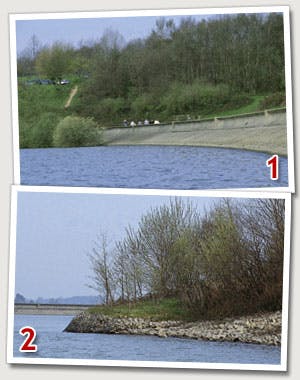
At the Chingley Corner end of the dam, the wall curves round to meet the steeptural bank of Chingley Wood. You can fish here during the day beyond a line painted near the end dam face which denotes the end of the 10-6 daytime dam fishing restrictions. It frequently holds good numbers of trout and can be a real hot spot for fry and midge feeding trout.
TOP TIP: Use a long handled net to make landing fish safer.
BEST TIMES: All season
WADING: Don’t! Stay away from the edge.
WIND EFFECT: Best in a North-Easterly.
2) Chingley Point
THIS small, but at times, excellent spot is usually ignored by the majority of bank anglers. Perhaps the steep bank, trees, limited fishing space and a fair 20-25 minute walk from the dam car park puts them off! There always seem to be buzzers present in the Chingley Wood area and this little spot can be especially good in an East wind. Fish will come round from the wood on the ripple and into the push of water coming round the point and feed up into the wind towards Bewl Straight. Try buzzers if no fish are showing and dries if they are. The water is deep here but I always try to cast as far as I can and let the flies swing on the wind. If the wind goes too far round to the North, you loose that push of water and the fishable area becomes too calm and fish will hold off out of reach. You can see them but can’t reach!
Avoid this spot in an onshore wind. It will dirty up and casting becomes difficult.
TOP TIP: Only fish here if the wind is right.
BEST TIMES: May-June
WADING: Don’t fall in, the bank is steep.
WIND EFFECT: Best in an Easterly
3) Goose Creek
TO reach this spot, like many others in Bewl straight, drive South on the A21 past the entrance to Bewl Water, turn right into Rosemary Lane. Drive down the lane and park on the dam causeway. Walk past the cottages on the North side of Bewl Straight along the public footpath to reach Goose Creek.
A gently sloping grass bank allows easy nymphing into this deep creek which can be good at times, but is a bit unpredictable. Move about and prospect because you may contact fish well into the top end of the creek. Any wind from North to East allows long casting and slow nymphing in the Spring and early Summer. A South West wind will suck fish out of the bay and you may be better off fishing opposite in Dunster’s or at one of the many spots on the South side of Bewl Straight.
If Goose Creek is not fishing, you can walk further on to try another lovely spot called Hatherell’s Bay which is very little fished and can hold confidently feeding fish. You will usually have the whole bay to yourself. Later in the season you can find fry feeders in the two bays mentioned or anywhere along the bank back to Rosemary Lane.
There are many really nice spots to try, making for a really interesting day’s bank fishing. This is one bank that I don’t mind fishing on a gentle onshore Southerly wind. Midges can be pushed downwind and you can come across undisturbed trout feeding really close in. Great!
TOP TIP: Worth the walk on the right wind.
BEST TIMES: April-June, September.
WADING: Safe and easy.
WIND EFFECT: Best in an Easterly.
4) Rosemary Lane Dam
A VERY popular early season spot, especially on the south bank opposite the Cottages. A South East wind will draw fish in. As the water warms during the Summer, fish seem to leave this bank. However as the water levels drop, long casts and deep nymphing can take fish feeding over the old stream bed, which runs away from the dam and along Bewl straight.
Later in the season, fry become a serious diet item in this whole area. Large shoals of fry will draw in numbers of trout and sometimes really good fish.
I have had many limit bags from this area on Floating Fry and Minky patterns. Fish often seem to feed across the middle of this bay right up to the dam face but at fry feeding time in late August and September the water will have dropped a long way. If you get a good wind from behind, you can put out long casts and drift fry patterns around.
TOP TIP: Fantastic fry feeding late in the season.
BEST TIMES: Early season, September.
WADING: Easy.
WIND EFFECT: South East best for the South side.
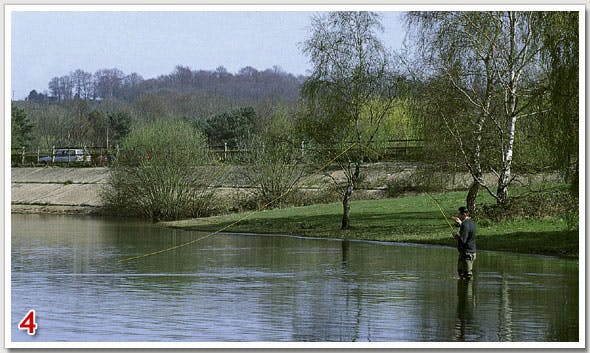
5) Rosemary Peninsula
THIS can be a really excellent bank spot if fish are present in numbers in the Tinkers Marsh area. There is surprisingly deep water off this point, especially on the South East corner and round into the bay on the South side. Try early morning, late evenings and fish deep during the day with nymphs. Best fished on a South East wind which will draw fish up into Tinkers Marsh from Bewl Straight, or an Easterly when fish will come across from Overys. Late season can see fry feeding activity all along this bank.
TOP TIP: Get here early in the day.
BEST TIMES: April-June
WADING: Easy but there are drop-offs.
WIND EFFECT: Best on a South-Easterly.
6) Tinkers Marsh
THIS long, quiet arm is very little fished. There is some early season fishing from the grass banks on the East side of the arm, which are best fished on a South or East wind. Extensive tree cover makes access early in the season difficult and rising water temperatures during the season will push fish out.
Dirty water entering the reservoir from the streams at the top end of Tinkers can have the same effect. The prospecting angler may find naturally feeding trout very close to the bank as the water levels drop and more bank becomes fishable. There are a few tight spots that can be fished between the trees lining the top of the arm.
Trout sometimes run right up and hold in the stream beds. The favoured area in Tinkers Marsh is on the West side at Tinkers Point, fishing on a West wind into the open water. It is best to walk from Dunsters car park to reach this spot.
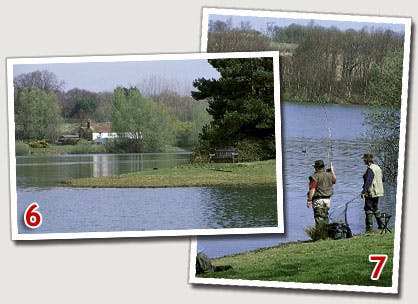
TOP TIP: Concentrate on Tinkers Point.
BEST TIMES: April-June.
WADING: Easy.
WIND EFFECT: West winds for Tinkers Point.
7) Dunsters Bay
TO reach this bay, drive from Ticehurst down a side lane past Overy’s Farm and park in the car park on the East side of the bay. From here you can walk East to reach Tinkers Point or West to reach the far side of Dunsters Bay and Ferrypoint beyond.
On the East side of Dunsters Bay you can fish from a high, grassy bank. Try nymphing from this spot on a Southerly wind when trout may move upwind towards you. If the wind goes too far round to the West, this bank becomes awkward to fish and it is best to move to the West side of the bay. Further into the bay, the water is shallow and although trout do hold here, they may be some distance out.
The best area on this side is the open bank as it bends round to meet Bewl Straight at Dunsters Point. This is one of the top bank fishing spots at Bewl and is always worth trying. On the prevailing South West wind, food is flushed out of Dunsters Bay and trout move past the point to feed.
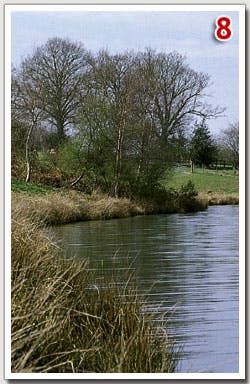
TOP TIP: Always try Dunsters Point.
BEST TIMES: All season.
WADING: Safe and Easy.
WIND EFFECT: Fishes in all wind directions but South Westerlies are best.
8) The Gorse Bushes
THE steep bank at this well-known landmark at Bewl frequently holds fish. It is a really good spot to fish nymphs and I have had many limit bags here including daytime fishing in bright sunshine. A grassy bank and deep water close in give you little reason to wade. I prefer the first 50 yards to the right of the bushes and have done less well on the West side. This spot fishes best when the water is high in the first few months of the season. As the water drops, it seems to hold fewer fish. Directly under the bushes, the bottom falls away steeply onto broken rocks which may account for why fish like this area so much. The Gorse Bushes can be fished comfortably on any wind from a Westerly to an Easterly but I prefer a South Westerly. You can then let a team of nymphs get pushed out and round by the wind. Fish will hold here on an onshore wind but casting can be awkward.
TOP TIP: Fish slow and deep with buzzers.
BEST TIMES: April-July.
WADING: Not necessary.
WIND EFFECT: Best on a South Westerly.
9) Ferry Point
THIS is one of the most famous bank fishing spots at Bewl. With deep water close in near the Landing Stage and wind action pushing large volumes of water past the point, the area is a magnet for trout. In the right conditions you can nymph into the deep water to the left of the Landing Stage in any wind from a North-Easterly to a South-Easterly. If the wind gets too far into the South, wave action along the shoreline will dirty the water and spoil your chances. Onshore winds will colour up the water badly as the undertow from wave action sucks dirty water out. A ferry service run by Southern Water will take you in minutes from the Lodge to Ferrypoint, but don’t be late back to the pick-up point for the return trip!
TOP TIP: Use the Ferry Service from the Lodge to get to Ferry Point.
BEST TIMES: Throughout the season.
WADING: In high water wade with extreme caution or not at all.
WIND EFFECT: Best in a South West wind.
10) Monty’s Seat
THIS lovely area of natural bank close to the Nature Reserve can be excellent. The bank bends at this point, making Monty’s Seat fishable on a wide range of wind directions: everything, in fact, from the dreaded Northerly right round to a soft Southerly. A left-to-right South-East wind is probably best, pushing your line round to intercept trout moving upwind from the main bowl of the reservoir. Easy wading and plenty of food make for a perfect bank spot and one of my favourites at Bewl.
TOP TIP: Well worth the walk.
BEST TIMES: April-September
WADING: Safe and easy.
WIND EFFECT: North East to Southerly.
11) The Nose
THIS is undoubtedly one of my favourite areas on the whole reservoir. Good weed growth and plenty of food in the margins make for great fishing. The bank profile combined with the prevailing wind direction draw and hold fish in this area for extensive periods. As the water drops through the Summer, an increasing bank area gives access to the shallow water on the fishing limit at the end of the Nose. You can then intercept fish moving upwind into the Nature Reserve. I tend not to fish the Nose area in the Spring, preferring to wait until the water has warmed up and fish are moving on top to be drawn and trapped.
The area is well sheltered from the prevailing South-Westerly wind by a bank and trees which come down to the water on the South side of this V-shaped bay. The area is therefore often fairly calm, which promotes surface feeding to assorted midges if it is not too bright. Fry are always present later in the season and together with snails, corixa, sedges and damsel nymphs, make for a great imitative fishing area.
TOP TIP: Fish over the weedbeds with a single fly.
BEST TIMES: June onwards.
WADING: Easy.
WIND EFFECT: Can be really good in a South West wind.
12) Wards Lane
THIS is a renowned and much favoured spot adjacent to the cages. Big fish can come close in – especially early in the morning and late in the evening – due to relatively deep water which runs close to the bank and because the cages are so close. There is very limited bank fishing space between the trees when the water is high but as the water level drops during the season, more bank fishing space becomes available. The bigger fish often fall to lure tactics but nymph fishing is also worth trying.
Also accessible from Wards lane is a really nice spot known as Green Bank, a ten-minute walk from the bottom of Wards Lane. Turn right and follow the bankside path through the trees. There is a good drop-off in front of this bank, encouraging fish to come in close on occasions. Best tactics are Buzzers and nymphs on a floating line/long leader combination. I have had some great bags of fish from this little fished area, a favorite with in-the-know nymph anglers at Bewl.
TOP TIP: Fish big fry patterns.
BEST TIMES: Can produce a big fish at any time.
WADING: Stay on the bank to fish.
WIND EFFECT: Avoid in a North-Westerly wind.
13) Brown’s Inlet
THIS lovely looking bay can hold a few surprises for the enquiring bank angler. Fish can be found on both sides of the bay but I like the New Barn side best. Fish can be found fairly close to the bank as food is blown out of the bay, especially green midge. Try all along the bank in front of New Barn. Further along, fish can be in close as you get towards Bryant’s Farm.
TOP TIP: Try this area in the evenings.
BEST TIMES: May-June
WADING: Easy.
WIND EFFECT: Best in West winds.
14) Hook Straight
IF you fancy a really interesting bank fishing session, spend a day working all the spots along the Lodge side of Hook Straight all the way from Bramble point right up to nearly the top end of Hook Straight. Given a favourable wind – my preference would be a gentle Westerly – you would have difficulty in fishing all of the available spots in one day. The very top end of Hook can only be fished when the water has dropped a long way towards the back end of the season. Wade with care, it is very muddy in places. Back towards Past Pine Bay there is a grassy bank which is hardly ever fished. Fish will feed in close here and Damsel patterns are always worth trying.
TOP TIP: Worth the walk for the peace and quiet.
BEST TIMES: May-August.
WADING: Easy.
WIND EFFECT: Best in South West winds.
15) Seven Pound Creek
ANOTHER underfished location at Bewl, despite the relatively easy 20-25 minute walk from the Lodge car park.
Park near the lodge and follow the footpath which will take you past Bramble Point to the start of Seven Pound Creek. Many anglers choose to stop and fish the steep green bank at the start of the bay or a little further along.
I like to walk round to Seven Pound Point. You then have access to a huge amount of bank fishing and the chances are that you will have it all to yourself. Try inside the creek where the bank is surprisingly steep, off the end where there is a big hole.
TOP TIP: Fish all around the point.
BEST TIMES: May-August.
WADING: Easy.
WIND EFFECT: Best in South West winds.
16) Bramble Point
THIS shallow point separates Bramble Bay from Seven Pound Bay. It can be a great spot to fish, especially if a soft South-Westerly wind allows you to swing nymphs round on the wind.
It is shallow here and trout can be some distance out if it is bright. This is a fantastic area for small green midge-feeding trout which will run upwind over the weedbeds in search of these tiny flies.
Later in the season this is a great area for fry feeding trout which may be found anywhere around the point.
TOP TIP: Fish well out and let the flies swing round.
BEST TIMES: June-September.
WADING: Easy.
WIND EFFECT: Can dirty up in strong Southerly winds.

